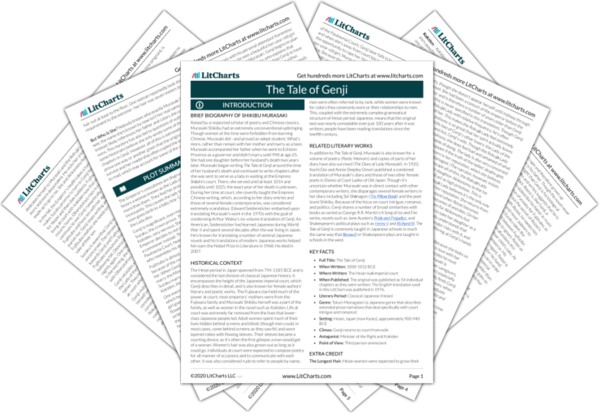Heian Court Culture
The Tale of Genji follows the titular character from the year before his birth to what most scholars believe is some point in his forties, a period thought to be set in the early to mid tenth century. This era in Japan, known as the Heian period due to the capital city's move to Heian-kyō (now Kyoto), was generally a time of great cultural production in terms of poetry, music, and literature. There were also…
read analysis of Heian Court CultureWomen, Sex, and Power
As a novel overwhelmingly concerned with Genji's numerous romantic pursuits, the relationship between men and women and the respective role that each sex is supposed to play in Heian court culture is extremely important. Specifically, The Tale of Genji illustrates how women are disadvantaged and disempowered by the laws and customs of the world they live in, while also suggesting that by either subverting those customs or very carefully cultivating the affections of powerful…
read analysis of Women, Sex, and PowerThe Parent-Child Relationship
As The Tale of Genji follows multiple generations both within and outside of Genji's immediate family, the novel necessarily becomes acutely concerned with the relationships between parents and children. By exploring the ways in which children are allowed to form—or are kept from forming—relationships with their parents, as well as the innumerable instances in which Genji upends conventions guiding parent-child relationships, the novel ultimately suggests that parents are immensely powerful guiding forces in their…
read analysis of The Parent-Child Relationship
Nature, Poetry, and Beauty
Despite the courtiers' belief that life cannot be properly lived away from the city (and therefore, away from court life itself), the natural world still holds an extremely powerful place within Heian court culture. The natural world is considered to be endlessly beautiful and inspiring, and, as such, all the characters try constantly to emulate it. They do this by writing poetry using imagery pulled from nature or, in the case of court women, dressing…
read analysis of Nature, Poetry, and Beauty






